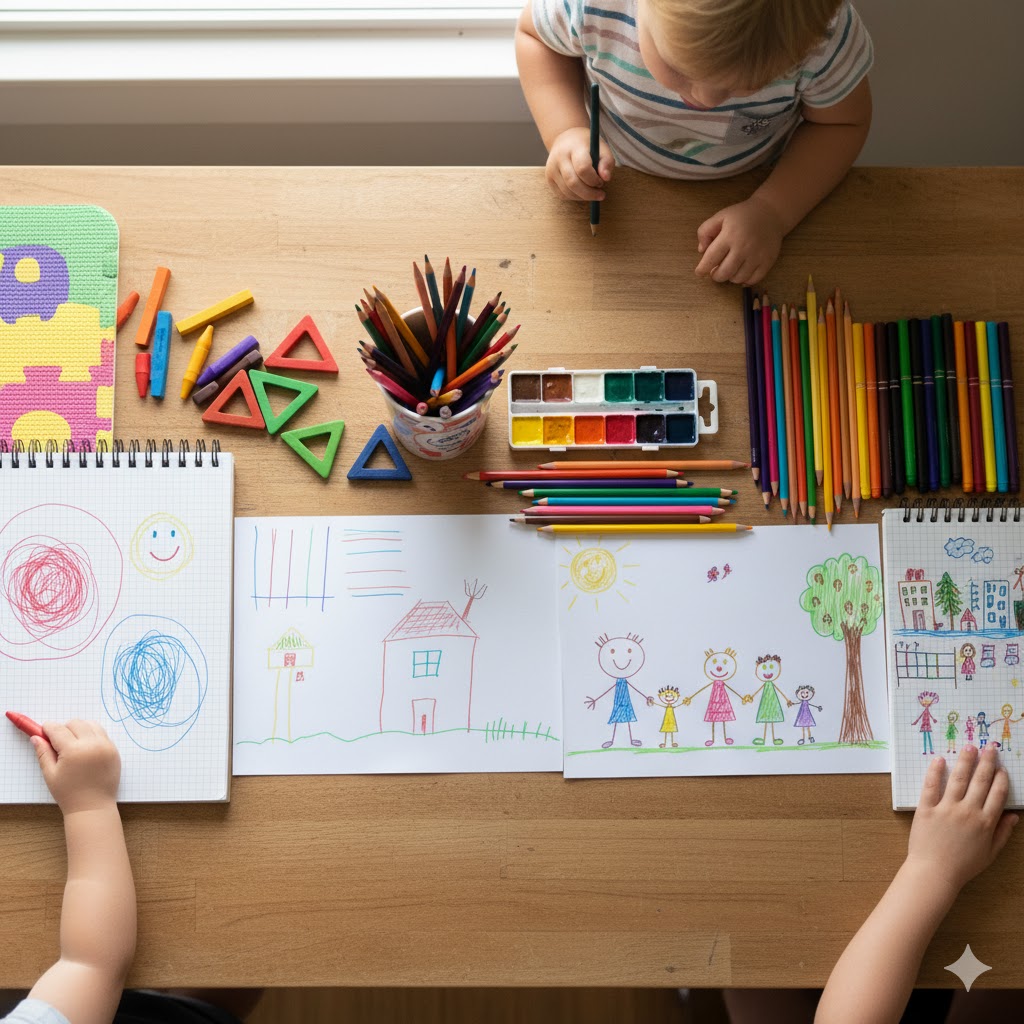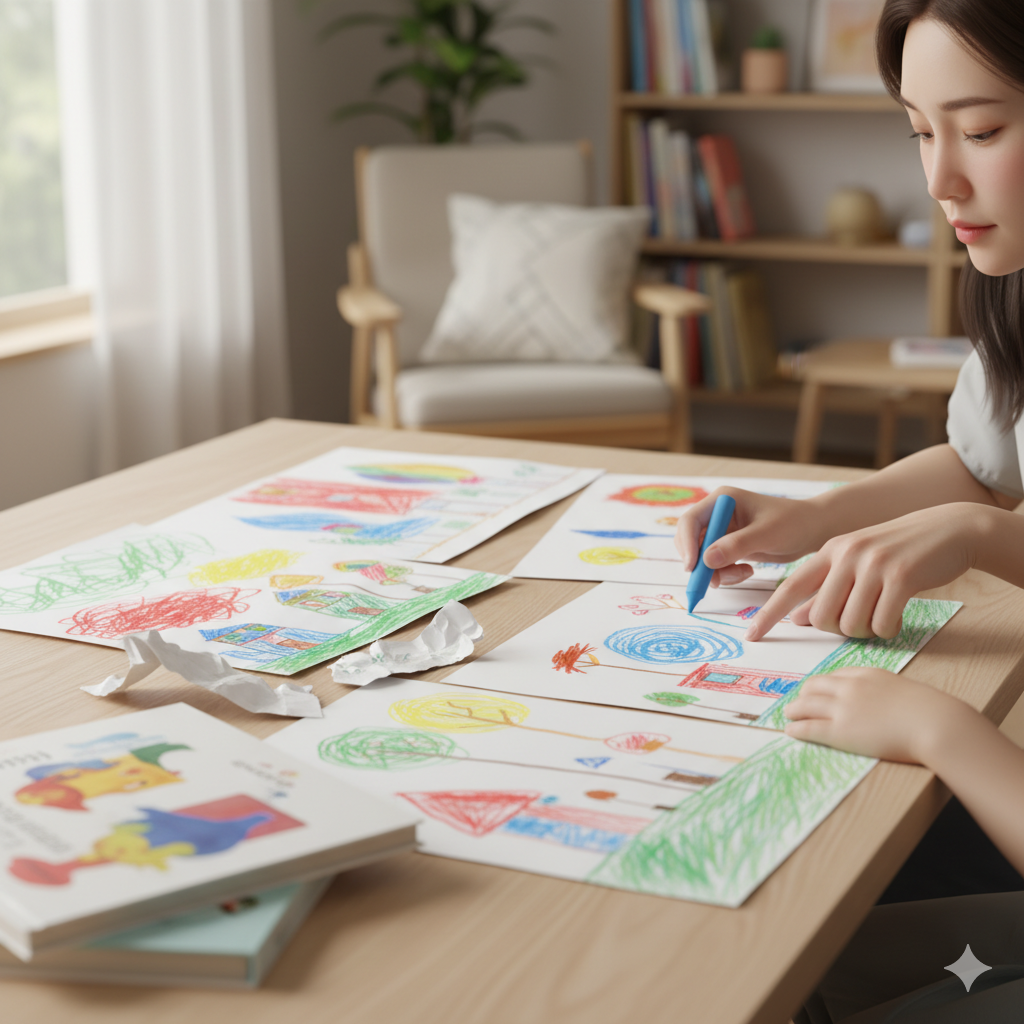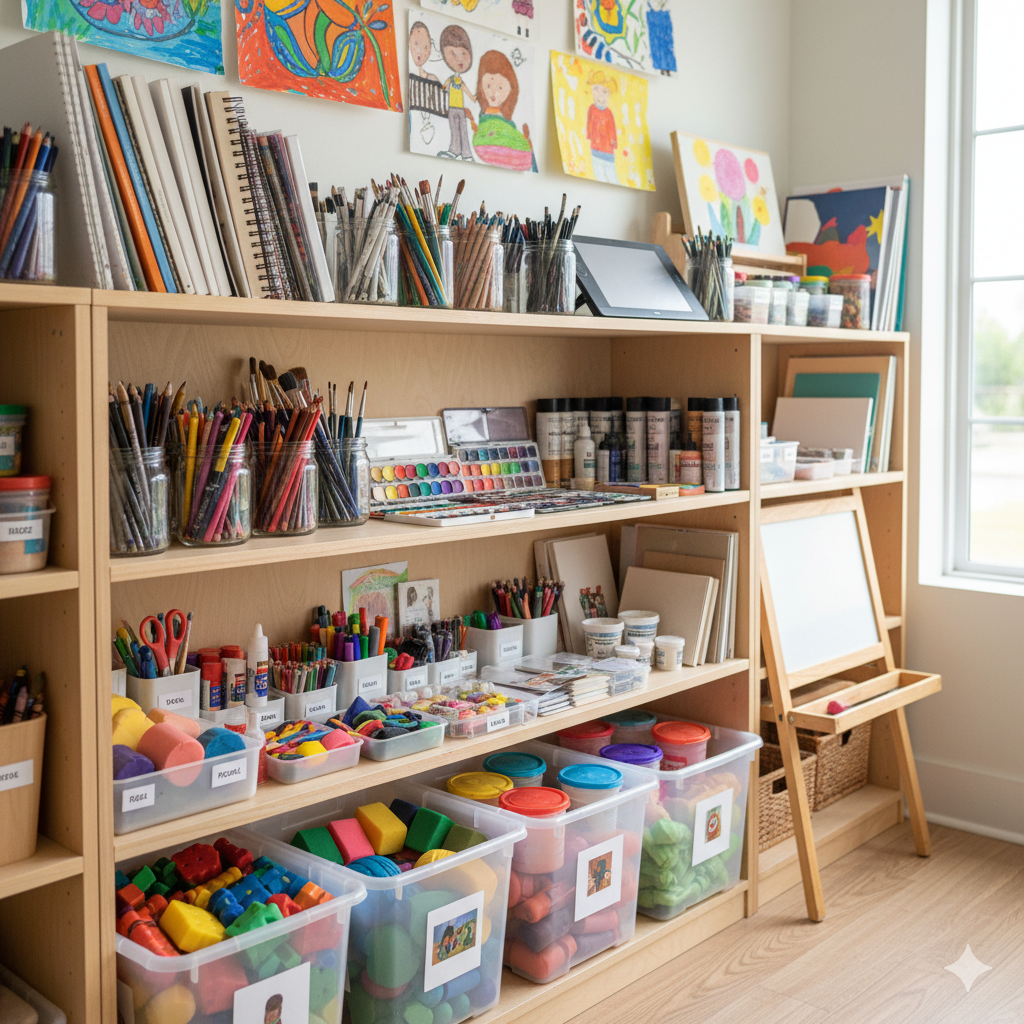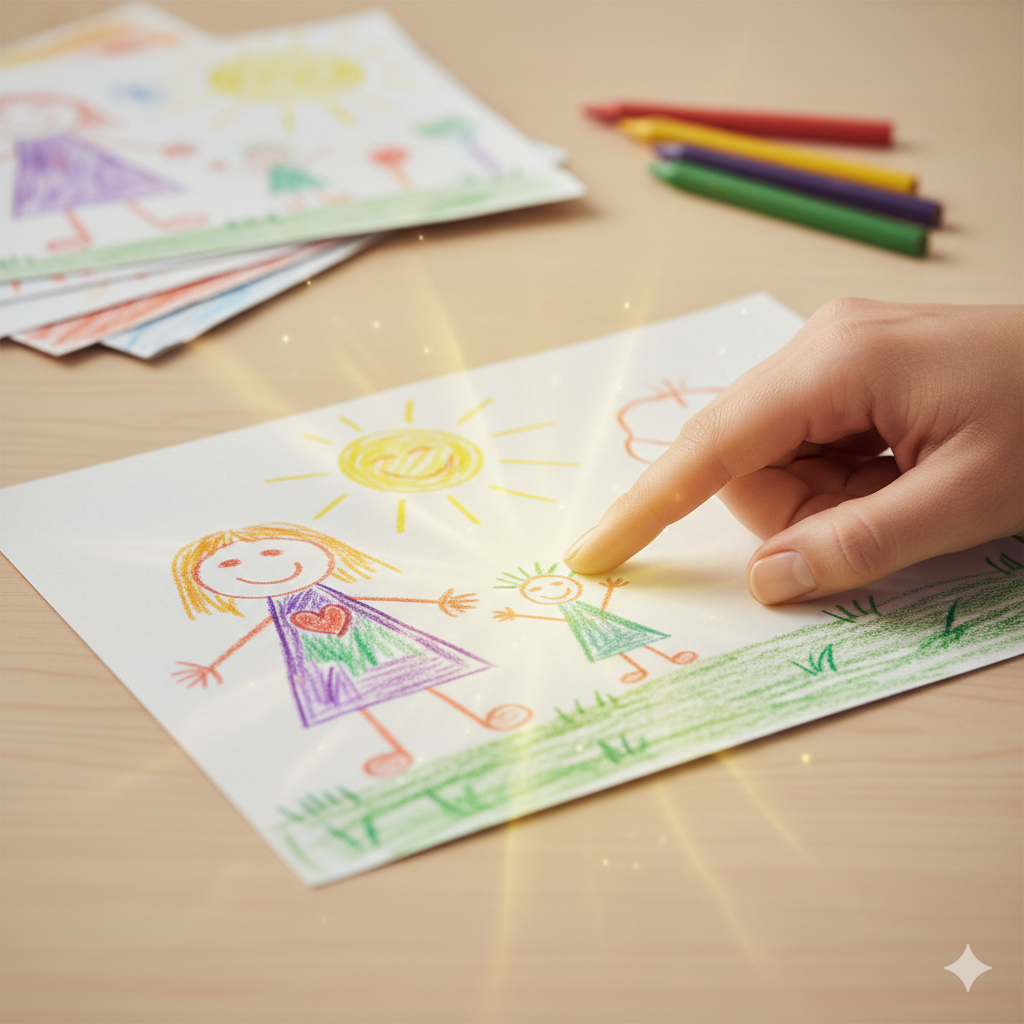Age-Appropriate Drawing Milestones: What to Expect at Every Stage
I'll never forget the moment my two-year-old daughter first made a mark on paper. It was just a single wobbly line, but the look of wonder on her face as she realized she could create something visible was absolutely magical. That simple line represented so much more than just a mark—it was the beginning of her journey into artistic expression and a window into her developing mind.
As parents, watching our children's artistic abilities develop is one of the most rewarding aspects of their growth. From those first wobbly scribbles to detailed family portraits, each stage of drawing development reveals important insights about your child's cognitive, motor, and emotional development. Understanding these milestones helps you appreciate your child's unique journey and provides guidance on how to support their artistic growth.
Why Drawing Milestones Matter
More Than Just Art
Drawing milestones are like signposts on your child's developmental journey. When my daughter progressed from random scribbles to her first recognizable circle, she wasn't just learning to draw—she was demonstrating her growing understanding of symbols, spatial relationships, and cause-and-effect. Every mark she made was evidence of her cognitive development unfolding right before my eyes.
These milestones reveal so much about what's happening in your child's developing brain. Fine motor control emerges as they learn to grip crayons properly. Emotional development shows through their willingness to share their artwork and their reactions to your responses. Social development becomes apparent as they begin to draw people and relationships. It's like watching their entire world expand through the simple act of making marks on paper.
The Scribble Stage (12-18 Months)
What to Expect
At this age, children are discovering the magic of making marks. Their drawings typically feature large, circular movements as children use their entire arm rather than just their fingers, with no representational intent as they're exploring cause and effect rather than trying to draw specific objects. You'll notice repetitive motions as they repeat the same movements over and over, with random placement as marks appear anywhere on the page.
Developmental Significance
This stage shows that children are developing cause-and-effect thinking, building fine motor control, learning to coordinate their eyes and hands, and discovering their ability to create something visible and lasting.
How to Support This Stage
Support this stage by providing large paper to give them plenty of space to move, using chunky crayons that are easier for little hands to grasp, focusing on the process rather than worrying about the final product, and celebrating their marks by showing enthusiasm for their creations.
Red Flags
Be aware of potential concerns including complete lack of interest in making marks, extreme frustration when trying to draw, or inability to grasp drawing tools by 18 months.
Controlled Scribbling (18 Months - 3 Years)
What to Expect
Children begin to show more control and intentionality with smaller, more controlled movements as they use less whole-arm movement and more wrist and finger control. They start beginning to name their scribbles, saying things like "This is Mommy" or "This is a dog," creating vertical and horizontal lines with more purposeful line-making, and making first attempts at circular shapes, though often incomplete circles.
Developmental Significance
This stage indicates growing fine motor control, emerging symbolic thinking, beginning understanding of representation, and increased attention span as they can focus on their artwork for longer periods.
How to Support This Stage
Support this stage by asking about their drawings with questions like "Tell me about your picture," providing variety in different colors, sizes of paper, and types of tools, avoiding corrections and letting them explore freely, and displaying their work to show that you value their creations.
Red Flags
Be aware of potential concerns including no attempt to name or explain drawings by age 3, extreme perfectionism or frustration, or regression to earlier scribbling patterns.
Symbolic Representation (3-4 Years)
What to Expect
This is when children start creating recognizable symbols, including first human figures that are often "tadpole" people (circle with lines for body and limbs), basic shapes representing objects like circles for suns and rectangles for houses, beginning to use color meaningfully rather than randomly, and stories emerging as their drawings begin to tell narratives.
Developmental Significance
This stage shows symbolic thinking development, understanding of basic shapes and forms, emerging narrative skills, and growing self-awareness as they begin to see themselves as separate from others.
How to Support This Stage
Support this stage by listening to their stories and asking them to explain their drawings, providing diverse materials like markers, crayons, and colored pencils, encouraging experimentation by letting them try different techniques, and sharing drawing time by drawing together occasionally.
Red Flags
Be aware of potential concerns including no attempt at representational drawing by age 4, extreme rigidity in drawing where they must be perfect, or inability to tell stories about their drawings.
Detailed Realism (4-5 Years)
What to Expect
Children's drawings become more sophisticated with more detailed human figures including body parts, clothing, and facial features. They draw houses, trees, and other recognizable objects with increasing detail, use a baseline as a ground line where objects "sit," and begin to show depth as objects may overlap or be placed in perspective.
Developmental Significance
This stage indicates advanced fine motor control, growing observational skills, understanding of spatial relationships, and increased attention to detail as they become more focused on accuracy.
How to Support This Stage
Support this stage by providing detailed materials like colored pencils and fine-tip markers, encouraging observation with questions like "Look at the tree outside, what do you see?," not worrying about realism and focusing on their creative expression, and offering gentle guidance by asking "What else might you add to your picture?"
Red Flags
Be aware of potential concerns including persistent "tadpole" people beyond age 5, extreme avoidance of drawing certain subjects, or significant regression in drawing abilities.
Narrative Art (5-7 Years)
What to Expect
At this stage, children use art to tell stories through complex scenes with multiple elements in one drawing, clear narratives that make sense, beginning to show emotions through facial expressions and body language, and more realistic proportions as objects and people are more accurately sized.
Developmental Significance
This stage demonstrates advanced narrative thinking, emotional intelligence development, improved spatial reasoning, and growing self-expression skills as they become more sophisticated communicators.
How to Support This Stage
Support this stage by encouraging storytelling and asking them to tell you about their pictures, providing story prompts like "Draw what happened at school today," respecting their privacy by not forcing them to share if they don't want to, and celebrating their creativity by focusing on their unique perspective.
Red Flags
Be aware of potential concerns including inability to tell coherent stories about drawings, persistent violent or disturbing themes, or extreme perfectionism that prevents completion.
Advanced Realism (7-9 Years)
What to Expect
Children begin to draw more realistically with proportional figures as people and objects are more accurately sized, perspective attempts where objects may show depth and distance, detailed backgrounds creating more complete scenes, and consistent style as their drawings begin to have a recognizable style.
Developmental Significance
This stage shows advanced cognitive development, growing artistic skills, increased patience and attention to detail, and developing personal style as they find their unique artistic voice.
How to Support This Stage
Support this stage by providing advanced materials like watercolors, pastels, and different papers, encouraging practice through drawing from observation, respecting their style and not pushing for "better" realism, and offering art classes by considering formal instruction if they're interested.
Red Flags
Be aware of potential concerns including complete loss of interest in drawing, extreme criticism of their own work, or inability to complete drawings.
Individual Differences and Variations
Factors That Influence Development
Several factors influence development including personality as some children are naturally more detail-oriented, interest level since children who love art may develop faster, opportunities through access to materials and encouragement, cultural influences as different cultures value different artistic styles, and individual pace since every child develops at their own rate.
When to Be Concerned
While variations are normal, seek professional guidance if you notice significant delays compared to peers, regression in previously acquired skills, extreme frustration or avoidance, or persistent concerning themes in artwork.
Supporting Your Child's Artistic Development
Create the Right Environment
Create the right environment by establishing a dedicated art space, even just a corner with supplies, ensuring easy access with materials within reach, providing variety of supplies with different tools for different stages, and including display space to show that their art is valued.
Encourage Without Pressure
Encourage without pressure by focusing on process and praising effort rather than just results, asking open questions like "Tell me about your picture," avoiding corrections and not telling them how to draw "better," and celebrating uniqueness by appreciating their individual style.
Provide Appropriate Materials
Provide appropriate materials by choosing age-appropriate tools like large crayons for toddlers and fine pencils for older children, investing in quality materials since good supplies encourage better results, offering variety with different papers, colors, and tools, and ensuring safety by making sure all materials are non-toxic.
Be Patient and Supportive
Be patient and supportive by not rushing development since each child moves at their own pace, celebrating progress by noticing improvements even small ones, staying positive and avoiding criticism or comparisons, and making it fun by keeping the focus on enjoyment and expression.
Common Concerns and Questions
"My child's drawings don't look like other children's."
This is completely normal! Every child develops at their own pace and has their own style. Focus on your child's progress rather than comparing them to others.
"Should I teach my child to draw better?"
For young children, it's better to focus on encouraging creativity and self-expression rather than teaching specific techniques. Let them explore and discover their own style.
"My child gets frustrated when drawing."
Some frustration is normal, but if it's excessive, try using easier materials, breaking drawing into smaller steps, focusing on the fun aspects, and taking breaks when needed.
"When should I be concerned about my child's drawing development?"
Seek professional guidance if you notice significant delays compared to typical milestones, regression in previously acquired skills, extreme avoidance or anxiety around drawing, or persistent concerning themes.
The Role of Technology
Digital Art Tools
Many children today also use digital drawing tools including tablets and styluses that can support fine motor development, drawing apps that provide new creative possibilities, both digital and traditional methods that have benefits, and balance by encouraging both digital and traditional art.
Benefits of Digital Art
Benefits of digital art include the undo function that reduces frustration, unlimited color variety with unlimited color options, easy sharing with family and friends, and portability since they can draw anywhere.
Benefits of Traditional Art
Benefits of traditional art include tactile experience with physical connection to materials, motor development that's better for fine motor skills, sensory input through different textures and smells, and uniqueness since each piece is one-of-a-kind.
Conclusion
Understanding your child's drawing milestones helps you appreciate their unique developmental journey. Remember that every child develops at their own pace, and what matters most is that you provide opportunities for creative expression and celebrate their artistic voice.
Whether your child is a prolific artist or prefers other activities, their drawings offer valuable insights into their growing mind. By supporting their artistic development with patience, encouragement, and appropriate materials, you're helping them build important skills that will serve them throughout their lives.
The key is to focus on the process rather than the product, celebrate their unique perspective, and provide a supportive environment where they feel free to express themselves creatively.
Want to learn more about what your child's specific drawings reveal about their development? Our AI-powered analysis tool can provide detailed insights into the artistic techniques, developmental milestones, and creative expression in your child's artwork. Try our child drawing analysis tool to discover what your child's drawings are telling you about their growth and development.
---
Remember: These milestones are general guidelines. Every child develops at their own pace, and variations are completely normal. If you have concerns about your child's development, consult with a pediatrician or child development specialist.



